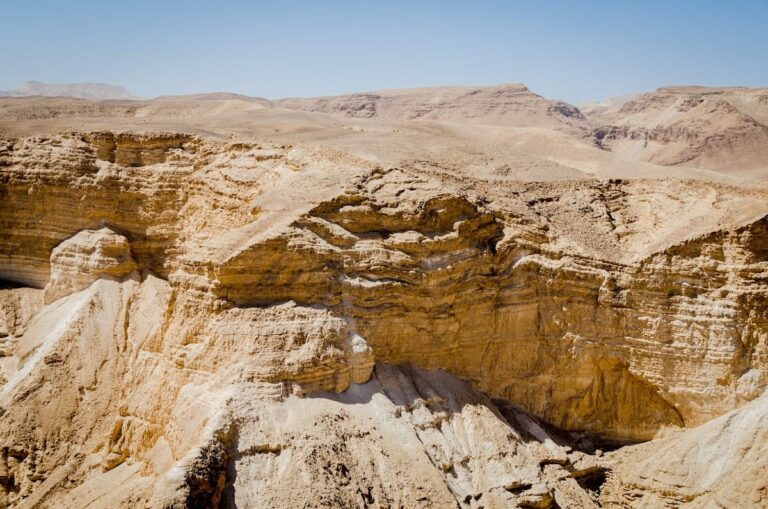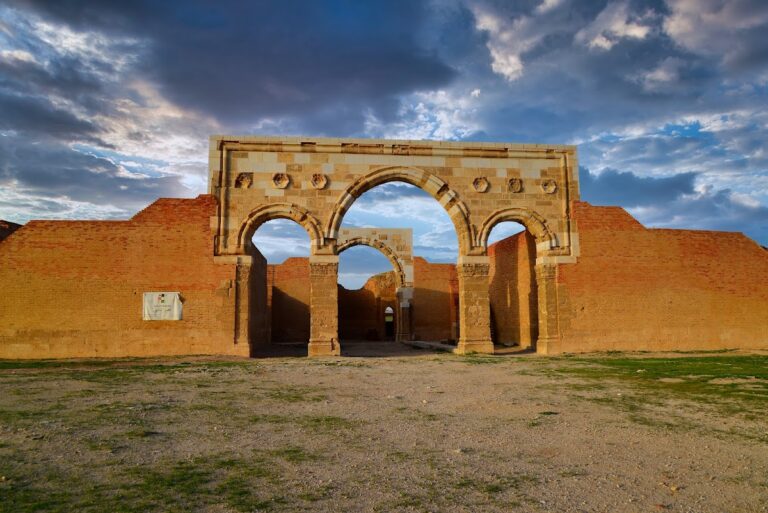Kerak Castle: A Medieval Fortress in Jordan
Visitor Information
Google Rating: 4.4
Popularity: Medium
Google Maps: View on Google Maps
Country: Jordan
Civilization: Crusader, Medieval Islamic
Remains: Military
History
Kerak Castle is a medieval fortress situated in the city of Karak, Jordan, originally constructed by the Crusaders in the 12th century. Its site, however, shows a long history of occupation dating back to the Moabite civilization around 860 BCE, with subsequent use by Nabataean, Roman, and Byzantine communities reflected in the archaeological record.
The castle was founded in the 1140s as part of the Crusader Kingdom of Jerusalem. It was established by Pagan the Butler and King Fulk as a more secure replacement for the nearby Montreal Castle. Known to the Crusaders as Crac des Moabites, Kerak served as a key stronghold from which they controlled Bedouin herders and important trade routes linking Damascus, Egypt, and Mecca. Its name evolved from the original Moabite term “Kir Moab,” to the Crusader French “Crac des Moabites,” eventually becoming “Kerak” in modern usage.
During the late 12th century, the castle was subjected to several sieges by the Muslim leader Saladin and his armies, including notable attempts in 1183, 1184, and 1188. It was the final 1188 siege that marked a turning point: faced with a shortage of weapons rather than food, the Crusaders surrendered. This event contributed to the gradual decline of Crusader dominance in the region.
Following the Crusader period, Kerak came under the control of the Ayyubid dynasty, who developed it into both an administrative center and a treasury site. Mid-13th century expansions included construction of an underground tunnel linking the castle to the adjacent town. The fortress remained strategically significant during internal Ayyubid struggles, notably when Sultan al-Salih Ayyub regained control in 1249.
Further enhancements came under Mamluk rule, particularly by Sultan Baibars in 1263, who added a new tower on the northwest corner. During this time, the castle became home to several governmental ministries and a military force comprising at least 700 horsemen assembled by the commander al-Mughith.
In the Ottoman era, Kerak maintained its strategic role owing to its location at a crossroads connecting the Arabian Peninsula, Egypt, and Syria. It was besieged and partly destroyed by Ibrahim Pasha in 1834 during a peasants’ revolt but was subsequently reclaimed by Ottoman authorities who, in 1893, reestablished control, appointing a governor and stationing a garrison of around 1,400 soldiers. Portions of the fortress were repurposed within Ottoman administrative and military functions.
The castle’s medieval fabric attracted scholarly attention in the early 20th century. Paul Deschamps, a medieval historian, and the architect François Anus conducted detailed studies in the 1920s, producing the first reliable architectural plans in 1929.
Today, Kerak Castle stands as a monument reflecting layers of history from its ancient origins through Crusader, Ayyubid, Mamluk, and Ottoman phases, with each era leaving distinct marks on its structure and purpose.
Remains
Kerak Castle occupies roughly 25,300 square meters atop a plateau approximately 900 to 1,000 meters above sea level. Its position on the southern end of this elevated landform, surrounded by steep hills on three sides, characterizes it as a spur castle, a design focusing defense primarily on the accessible northern side. The Crusaders built the main walls using rough volcanic stone, while later Muslim rulers repaired and expanded the fortifications with limestone quarried nearby. Both Christian and Muslim masons employed a draft masonry technique, which involves smoothing the edges of stone blocks while leaving the central area rough and raised.
The castle’s defenses include thick stone walls fortified by a series of rectangular projecting towers placed at regular intervals. These towers reflect an early Crusader preference influenced by Byzantine square designs, predating the later adoption of rounded towers known for better visibility. To deter attackers, Kerak features two deep ditches cut into the rock; one served as a large cistern collecting rainwater. A Byzantine-style ditch and a glacis—a steep, slippery masonry slope at the base of the walls—further hindered siege efforts by keeping siege engines at a distance and making scaling difficult.
On the northern side, two levels of large arched halls remain intact. These spaces functioned in multiple ways, including accommodation, stables, and as a fighting gallery where defenders could safely observe and repel attackers while sheltered from incoming missiles. A chapel stands along the eastern curtain wall, approximately midway along this side. Beneath the castle, subterranean passageways lead to fortified rooms, though their specific use and date relate to the castle’s various phases of occupation.
Kerak’s footprint is roughly 220 meters long, but its width varies significantly—from about 125 meters along the northern side to 40 meters at the southern edge overlooking a valley with a flowing water channel.
Later periods saw additions and changes to the castle’s structure. The Mamluk ruler Sultan Baibars enhanced the fortress by adding a tower on the northwest corner in 1263. During the Ottoman era, some areas within the castle were reused despite damage caused by the extraction of potassium nitrate-bearing stones; these stones were locally removed for producing gunpowder. To the south of the castle are graves believed to belong to companions of the Prophet Muhammad, indicating the site’s ongoing religious and cultural significance.
Today, the castle’s condition reflects the cumulative effects of its long history. Although well-preserved in parts, it is not designated as a UNESCO World Heritage site, partly because other Crusader castles in the region are maintained in better condition.
Nearby, the Al Karak Archaeology Museum, once located in the castle’s Lower Court but relocated in 2019 to a historic Ottoman building, exhibits artifacts representing a wide span of history from Neolithic times through Islamic periods. Visitors can see objects from Nabataean, Roman, Byzantine, and Crusader eras, illustrating the region’s layered past that Kerak Castle embodies in its stones.







